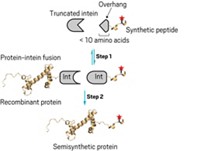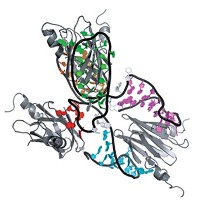Advertisement
Grab your lab coat. Let's get started
Welcome!
Welcome!
Create an account below to get 6 C&EN articles per month, receive newsletters and more - all free.
It seems this is your first time logging in online. Please enter the following information to continue.
As an ACS member you automatically get access to this site. All we need is few more details to create your reading experience.
Not you? Sign in with a different account.
Not you? Sign in with a different account.
ERROR 1
ERROR 1
ERROR 2
ERROR 2
ERROR 2
ERROR 2
ERROR 2
Password and Confirm password must match.
If you have an ACS member number, please enter it here so we can link this account to your membership. (optional)
ERROR 2
ACS values your privacy. By submitting your information, you are gaining access to C&EN and subscribing to our weekly newsletter. We use the information you provide to make your reading experience better, and we will never sell your data to third party members.
Synthesis
Phototriggers Track Protein Dynamics
Tetrazine-based probes inserted into peptides open a new window into structure evolution
by Stuart A. Borman
April 26, 2010
| A version of this story appeared in
Volume 88, Issue 17
Novel tetrazine-based probes that can be selectively inserted into peptides and removed photochemically open a new window into peptide conformational dynamics (Angew. Chem. Int. Ed., DOI: 10.1002/anie.201000500). Several photochemical agents have previously been designed to be incorporated into a peptide to constrain the structure and then to be removed photochemically, releasing the constraint and allowing the kinetics of the resulting peptide rearrangements to be monitored. Some of these probes need to be triggered with UV radiation, which can produce harmful radical by-products, and others introduce unwanted constraints on the structure of the generated peptide. Amos B. Smith III, Robin M. Hochstrasser, and coworkers at the University of Pennsylvania have devised tetrazine phototriggers that sidestep these complications. The new triggers can be photolyzed by visible or UV pulses, their photoproducts are only nitrogen and inert nitriles, and they introduce no unwanted constraints on generated peptides. The researchers suggest that the probes will permit tracking of peptide structure evolution at the amino acid residue level by 2-D vibrational spectroscopy.





Join the conversation
Contact the reporter
Submit a Letter to the Editor for publication
Engage with us on Twitter